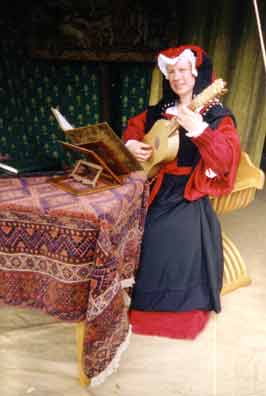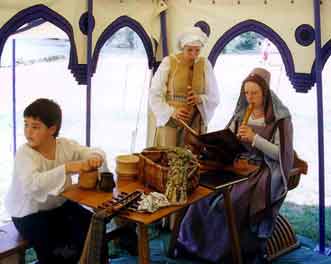| Archery |
| Brewing |
| Calligraphy & writing |
| Combat |
| Cooking |
| Dance |
| Etiquette |
| Household life |
| Medicine |
| Music |
| Needlework |
| Playacting |
| Religion |
| Storytelling |

| Lady Anne has a wide repertoire of courtly songs in English, French, Spanish, Italian or Latin. She accompanies herself either on the lute or the Spanish vihuela a mano. This instrument, shaped like a small guitar, is the Spanish equivalent of the lute, having similar double courses of strings and tuned as the lute. Both instruments also offer a great range of solo music. She plays arrangements of part songs, singing one part and simultaneously playing up to four more on her instrument. These arrangements are handwritten and it is from books such as hers that most early music has been preserved. When demonstrating the Elizabethan period it is possible to show some of the earliest printed music available: beautifully bound facsimile books of music for the vihuela by the Spanish composers Luis Milan (1535) and Luis de Narvaez (1538).
|
